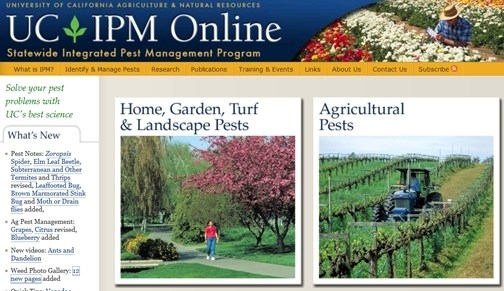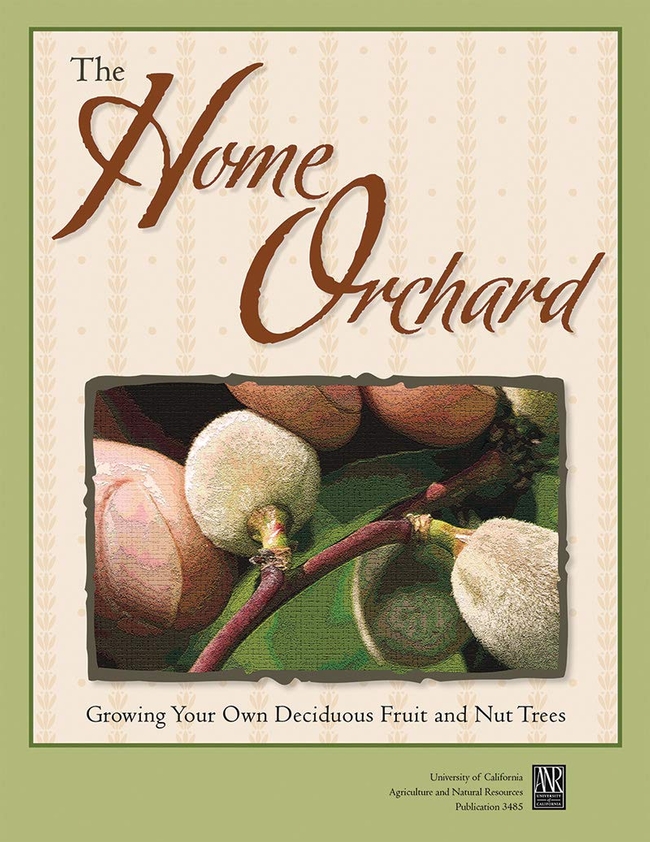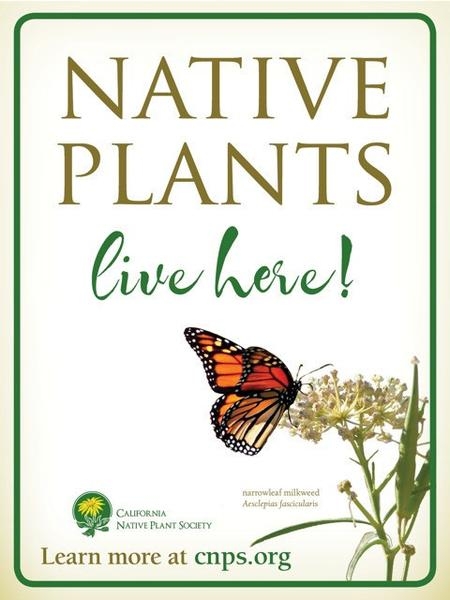By Susanne von Rosenberg, U.C. Master Gardener of Napa County
After you have been gardening a while, you may want to branch out and try growing more unusual plants. Being successful with less common plants requires more knowledge and research. Experience helps, too.
Uncommon plants fall into three categories. Some are simply unfamiliar but not difficult to grow, such as watermelons that don't have red flesh. (I like ‘Cream of Saskatchewan,' which has a creamy white interior.) We're all familiar with pluots (a 75 percent plum-25 percent apricot cross), but there are also plumcots (equal parts plum and apricot) and apriums (25 percent plum-75 percent apricot), as well as a cherry-plum cross. All of these crosses can thrive in Napa Valley, but be sure to check the basics before planting them. Does your microclimate provide enough hot days to ripen that watermelon, or enough chill hours for the aprium?
Other uncommon plants may be more challenging because you don't know anyone who has grown them. The jujube (also known as Chinese date or red date) is a fruit tree that at least one Napa County nursery offers in bare-root form. But do you know anyone who has grown one?
For such plants, you need to research the pros and cons yourself. Jujubes have spines on young wood, require unusual pruning techniques and tend to sucker. On the positive side, they thrive in almost any soil, are drought-resistant, have a long productive life (more than 50 years), often fruit within two years of planting and produce nutritious fruit.
Other plants may be rare in Napa County because they are difficult to grow here. They may not like our climate or need more day length than we have. While you can modify climate somewhat (depending on how much time and money you want to invest), there is little you can do about day length.
Plants from equatorial areas are used to a consistent 12 hours per day of sunlight and may not flower or fruit if the daylight period is longer or shorter. Chayote squash tends not to set fruit in Napa Valley until late August or early September, when the days are shorter, and then our growing season is cut short by frost before the squash have time to mature.
Before planting any uncommon plant, find out whether it is invasive in California. A few years ago, I became enthralled with a plant called autumn olive, also known as silver berry. Then I learned that it is considered invasive everywhere it is found. Even so, you can still buy it in nurseries, including on-line nurseries.
Next, think carefully about your microclimate. Consider how much sun or shade the plant requires, how much heat it needs or can tolerate and whether it requires some winter chill. Is the plant frost- or wind-sensitive? What are its needs with regard to humidity? What is its typical growing season, and is our growing season long enough for it to mature fruit?
What kinds of pests and diseases does this plant suffer from in its native habitat, and do we have any of these pests and diseases in Napa Valley? Make sure the plant can thrive in your type of soil and that, when full grown, it will fit in your garden. I was thinking about planting pecan trees until I learned that they typically grow 65 to 130 feet tall.
Finally, think carefully about how much time and money you want to invest. You could grow bananas in a heated greenhouse in our climate. Do you want to spend the money to install and heat a greenhouse?
Do your research using reliable sources such as the University of California Cooperative Extension, other university websites, information from U. C. Master Gardeners, reputable nurseries and other recognized authorities such as the California Rare Fruit Growers or California Native Plant Society. When considering information from other universities, be aware that their recommendations are based on the climate in that region.
Enjoy your explorations and let U. C. Master Gardeners of Napa County know what types of unusual plants you have growing in your yard.
The UC Master Gardeners of Napa County are volunteers who provide UC research-based information on home gardening and answer your questions. To find out more about upcoming programs or to ask a garden question, visit the Master Gardener website (http://napamg.ucanr.edu) or call (707) 253-4221 between 9 a.m. and noon on Mondays, Wednesdays or Fridays.






By T. Eric Nightingale, U.C. Master Gardener of Napa County
Gardening and a love for nature is on the rise these days. Many people I know would like to garden more but believe they can't because they live in an apartment or have only a small yard. That's not so. While they may not be able to have massive oaks or cultivate long rows of tomatoes, there are still many ways to grow plants.
The first task in any small space, be it a balcony or yard, is to understand the microclimate. Small yards are often protected from the elements by overhanging roofs and fences, while balconies may be more exposed to wind and rain. Study where sunlight hits your growing space. Spend a day at home watching the patterns of sun and shade as the day progresses.
Even if you have only a small yard, you can increase your growing capacity by using containers. Because they're mobile, you can “go vertical” and put them on shelving or place them in spots that would normally be impractical as a growing space. Think creatively
about where your containers can go.
Most plants, properly cared for, will do well in a container for a while at least, but they may require extra attention to keep them healthy. From personal experience, I recommend firm resolve and objectivity during the plant-selection phase. It can be easy to talk yourself into attempting to grow a cactus on a shady patio or a fern on a baking-hot balcony. In the end, both you and the plant will be unhappy with the situation.
When planting in containers, choose an appropriate potting mix. Soil pulled from your yard or garden will likely be too dense. Commercial potting mixes contain perlite and other porous ingredients that enhance aeration and drainage. If you fill a container with garden soil, the soil will settle over time and become compacted, eliminating pore space.
I have seen container gardens that incorporate old charcoal grills, rubber boots, teapots, pasta colanders and paint buckets. If it can hold soil and you can make a hole in the bottom, it can be a planter. For food production, look for food-safe containers. Certain plastics, metals and even woods may leach small amounts of chemicals. This may not be a problem with an ornamental plant, but it is undesirable for edibles. Otherwise, you are limited only by your imagination. Of course, no one will criticize you for just using terra cotta pots.
Compared to in-ground gardening, container gardening presents a few unique challenges, Plants in containers tend to need more frequent watering. Extreme weather conditions also take more of a toll. Plants in containers are more exposed and can't rely on the warmth and water reserves that soil-grown plants can access. In winter I move most of my potted plants against the house to a provide a little more shelter and warmth. Keeping them well watered and covered with frost cloth is also important during harsh winter nights.
One aspect of container planting that caught me by surprise is the issue of water quality. Over time, minerals in the water build up in the soil, sometimes to excess. This buildup is more likely when a plant is not getting thorough watering. To prevent the buildup, deep-water container plants occasionally, watching for water to flow from the bottom of the pot. This tactic will help flush out excess salts and minerals.
If you have a garden hose fed by an in-home filtration system, you may not experience mineral buildup. But if you are using softened water, you may have more problems than expected. Water softeners add salts, which quickly affect plants. One sign of excess salts and minerals in a container is a whitish crust on the soil surface.
I see this buildup in my houseplants, which are lightly watered and never exposed to rain. Poor plant health also signals soil problems. Excess salts can cause a pH imbalance, which can keep the plant from absorbing nutrients. Adding fertilizers, which contain salts, may only make the problem worse. In fact, fertilizer can also build up in containers and should be occasionally flushed as well.
Container gardening offers flexibility and the potential for creativity. It's a hobby anyone can enjoy.
Workshop: Napa County Master Gardeners will hold a workshop on “Culinary Herbs and Cocktail Garnishes” on Saturday, June 23, from 9:30 a.m. to 11:30 a.m., at Central Valley Hardware, 1100 Vintage Avenue, St. Helena. The workshop will be repeated on Sunday, June 24, from 1 p.m. to 3 p.m., at Yountville Community Center, 6516 Washington Street, Yountville. Plant a plethora of herbs to add color and delight to your plate and to your beverages. Cilantro, basils, thymes, mints and their flowers, nasturtiums, roses, pansies, borage and calendula are only the beginning. Learn to grow these useful plants. Demonstrations and hands-on activities add to the fun. Online registration (credit card only); Mail-in/Walk-in registration (check only or drop off cash payment). To register for the Yountville workshop, call the Parks & Recreation Department at 707-944-8712 or register online.
Master Gardeners are volunteers who help the University of California reach the gardening public with home gardening information. U. C. Master Gardeners of Napa County ( http://ucanr.edu/ucmgnapa/) are available to answer gardening questions in person or by phone, Monday, Wednesday and Friday, 9 a.m. to Noon, at the U. C. Cooperative Extension office, 1710 Soscol Avenue, Suite 4, Napa, 707-253-4143, or from outside City of Napa toll-free at 877-279-3065. Or e-mail your garden questions by following the guidelines on our web site. Click on Napa, then on Have Garden Questions? Find us on Facebook under UC Master Gardeners of Napa County.
By Barb Whitmill, U. C. Master Gardener of Napa County
Spring and fall are opportune seasons to plan and create a new garden. On Saturday, February 25, U. C. Master Gardeners of Napa County will host a public workshop on drip irrigation and garden design (details below). Please plan to attend if you are plotting a new landscape or revamping an existing one.
Landscape design involves organizing outdoor spaces using both hardscape (such as walkways and walls) and plants to create a functional, attractive environment. Well-designed gardens serve their intended purpose, while minimizing the use of water, fertilizer, pesticides and labor.
Before creating your garden plan, do a site assessment. This analysis is important whether you are reworking an old garden space or starting fresh.
Evaluate the natural topography of the site: its hills, slopes and drainage. Study the sun and wind exposure in different areas. Map out existing structures such as a home, garage, pool, fences and walkways and how they are oriented to the sun.
Determine the water source for the irrigation. Locate mature trees and large shrubs that you intend to keep, and note the sun and shade patterns they create. Look beyond the property to consider views you may want to enhance or screen out.
What is your objective for the landscape and how will you use it? Perhaps you want to create an inviting entry to your home or a play space for young children. Maybe your wish list includes an ornamental or edible garden, an area for entertaining, a cooking space, a water garden, a potting shed or storage area. Consider traffic flow, how people will move from space to space. Note any concerns about loud neighbors or road noise.
Now comes the fun part, using design principles to create your landscape. Professional designers think about scale, balance, perspective and unity.
A tree planted next to a large house needs to be big when mature to fit the scale of the house.
Balance can be symmetrical—a house with identical plantings on each side of the front walk—or asymmetrical. You create asymmetrical balance if you plant a large tree on one side of the walk and several smaller shrubs on the other side.
Perspective tricks can help you visually enlarge your garden. Strong foliage colors and textures, tapering walkways, flowerbeds that draw the eye outward or “borrowing” a view beyond the property line all make a space appear larger.
Unity can come from repeating geometric shapes or design elements. For example, designing a curved lawn border for front, side and back yards will create unity.
Simplicity provides impact. Better to use a few plants in groupings rather than a lot of plants in singles. Defining the transition between plantings will create harmony.
Drip irrigation is suitable for all kinds of plantings: vegetable gardens, flower gardens, shrubs and both fruit trees and ornamental trees. Drip irrigation is efficient with little water lost to evaporation or runoff. It can be applied only when needed, and it limits weed growth as the water is supplied only to the plant. And drip lines and emitters can be easily repositioned when you move plants.
However, drip systems are not problem-free; they require monitoring and maintenance. Emitters may clog and you may not be aware that a plant is dry until it's too late. Also, drip systems can be damaged by animals, insects and humans.
Choose plants that are adapted to our climate and group them in “hydrozones” according to water needs. Each hydrozone should have its own valve that you can control individually to meet the needs of the plants in that zone. Many gardens have four hydrozones: routine irrigation, reduced irrigation, limited irrigation and no irrigation other than rain.
Most likely, your drip system will have a control center with multiple valves, a pressure regulator, a filter and a timer. Transmission to the planting area is usually constructed with PVC pipe or PE (polyethylene) hose. Emitters can be attached directly to the PE hose, or narrow tubing can be used to reach plants with emitters or sprayers. Drip tape, pierced with small holes, can be used for plants grown in tight rows, as in many vegetable gardens.
Drip emitters deliver water at a specific rate, usually one to three gallons per hour. Knowing the water needs of each plant will enable you to choose the proper emitters. Once the system is in place, each valve timer can be programmed to deliver the necessary amount of water to each hydrozone.
Anyone can learn to install a home drip-irrigation system. If you're planning a new garden or simply want to do a better job of managing your existing drip system, please attend the Master Gardener's upcoming drip-irrigation workshop.
Workshop: U.C. Master Gardeners of Napa County will host a workshop on “Drip Irrigation and Garden Design” on Saturday, February 25, from 9 a.m. to 11 a.m., at the University of California Cooperative Extension, 1710 Soscol Avenue, Napa. Learn how to use drip-irrigation components in your home garden in this hands-on workshop. Online registration (credit card only); Mail-in registration (check only or drop off cash payment)
Master Gardeners are volunteers who help the University of California reach the gardening public with home gardening information. U. C. Master Gardeners of Napa County ( http://ucanr.edu/ucmgnapa/) are available to answer gardening questions in person or by phone, Monday, Wednesday and Friday, 9 a.m. to Noon, at the U. C. Cooperative Extension office, 1710 Soscol Avenue, Suite 4, Napa, 707-253-4143, or from outside City of Napa toll-free at 877-279-3065. Or e-mail your garden questions by following the guidelines on our web site. Click on Napa, then on Have Garden Questions? Find us on Facebook under UC Master Gardeners of Napa County.
Are you looking for new tomato varieties to grow this year? There are several factors to consider in making your choice.
What is the microclimate in your garden? Do you live in one of the cooler areas of Napa Valley, such as American Canyon or Carneros? How much sun does your garden get? Do you want to grow tomatoes for cooking and preserving, or do you primarily want tomatoes to eat fresh? Is your garden small, with room for only one or two tomato plants?
Consider also whether you want to grow hybrid or heirloom tomatoes. Many hybrids have been bred for better yield or disease resistance. Check the nursery label for the letters V, F, N, T or A. If present, these symbols indicate that a variety is resistant to verticillium wilt, fusarium wilt, nematodes, tobacco mosaic virus or alternaria stem canker.
Heirloom and open-pollinated tomatoes are another option. These tomatoes offer a wide spectrum of tastes, colors, textures and shapes and tend to be more expensive at the grocery store. Some heirlooms are less productive than hybrids and more susceptible to disease, but many gardeners appreciate their unusual characteristics and the fact that their seeds can be saved and replanted the following year. In contrast, hybrid seeds will not produce tomato plants with the same characteristics as the mother plant.
If your climate is cool, try early-bearing varieties such as ‘Bloody Butcher', ‘Early Girl', ‘Crimson Carmello' and ‘Stupice'. These early tomatoes make good garden companions for the larger varieties, which produce fruit later. ‘Bloody Butcher' produces three- to four-inch fruits with rich flavor and a deep red color. ‘Crimson Carmello' is a tasty, extremely productive and disease-resistant hybrid from France. ‘Stupice', a Czech heirloom, is a cold-tolerant tomato rated highly for flavor.
Cherry tomatoes also tend to ripen early. They are ideal for salads and snacking, and children love them. Some more unusual open-pollinated varieties include ‘Black Cherry', ‘Blush', ‘Isis Candy' and ‘Blue Berries'. ‘Black Cherry' has the rich complex flavor that makes black tomatoes so popular. ‘Blush', is an elongated, plump cherry, is large enough to slice but small enough to eat out of hand. Last year it won the Napa County Master Gardeners' taste test for cherry tomatoes. ‘Isis Candy' is a productive bi-color cherry tomato with a spectacular yellow-gold cat's-eye starburst on the blossom end. It has a rich, fruity taste but is not sugary sweet. ‘Blue Berries' produces clusters of one- to two-ounce dark-skinned tomatoes that are high in antioxidants.
If you're a fan of large, beefy red tomatoes, consider heirlooms such as ‘Beefsteak', ‘Mortgage Lifter' and ‘Boxcar Willie'. ‘Genuwine', a new hybrid, is a cross between ‘Brandywine' and ‘Costoluto Genovese'. It is higher yielding and more productive than either parent, and with an estimated 70 days to maturity, it should produce earlier than most other beefsteaks.
Are you looking for a paste tomato for sauces and preserving? Some choice varieties include ‘Roma', ‘San Marzano', ‘Opalka' and ‘Big Mama'. The first three are heirlooms. ‘Roma' is the earliest producer and the best suited for container growing. ‘Big Mama' is a prolific hybrid.
Maybe you would like to grow tomatoes in a variety of colors. Sliced on a platter, they make a beautiful presentation. ‘Cherokee Purple' is an old favorite among the larger black tomatoes. ‘Paul Robeson' is another heirloom black type with medium-sized fruit. It won the Napa County Master Gardeners' taste test last year for standard-sized tomatoes.
One of my new dark favorites is ‘Chocolate Stripes'. This delicious, open-pollinated tomato has a mahogany skin with distinctive olive-green striping. The fruit can reach six inches in diameter.
Beyond black tomatoes, ‘Marvel Stripe' produces large yellow-orange fruits streaked with ruby red. Weighing up to two pounds, these tomatoes have a sweet, fruity taste.
Whichever varieties you choose, wait to plant until the danger of frost is past and the soil is sufficiently warm. Soil temperatures below 57ºF delay growth and leave the plants more susceptible to insect damage and disease.
Workshops: Napa County Master Gardeners will hold a workshop on “Growing Tomatoes” on Sunday, April 10, from 2 p.m. to 4 p.m., at the Yountville Community Center, 6516 Washington Street, Yountville. The workshop will focus on techniques for a successful harvest, including soil temperature requirements; tomato types; care and fertilizing; support choices; and integrated pest management. Register with the Parks and Recreation Department at
707-944-8712 or on its web site.
The “Growing Tomatoes” workshop will repeat on Saturday, April 16, from 9:30 a.m. to 11:30 a.m., at the University of California Cooperative Extension office, 1710 Soscol Avenue, Napa. On-line registration (credit card only); Mail-in/Walk-in registration (cash or check only).
Master Gardeners are volunteers who help the University of California reach the gardening public with home gardening information. U. C. Master Gardeners of Napa County ( http://ucanr.edu/ucmgnapa/) are available to answer gardening questions in person or by phone, Monday, Wednesday and Friday, 9 a.m. to Noon, at the U. C. Cooperative Extension office, 1710 Soscol Avenue, Suite 4, Napa, 707-253-4143, or from outside City of Napa toll-free at 877-279-3065. Or e-mail your garden questions by following the guidelines on our web site. Click on Napa, then on Have Garden Questions? Find us on Facebook under UC Master Gardeners of Napa County.

